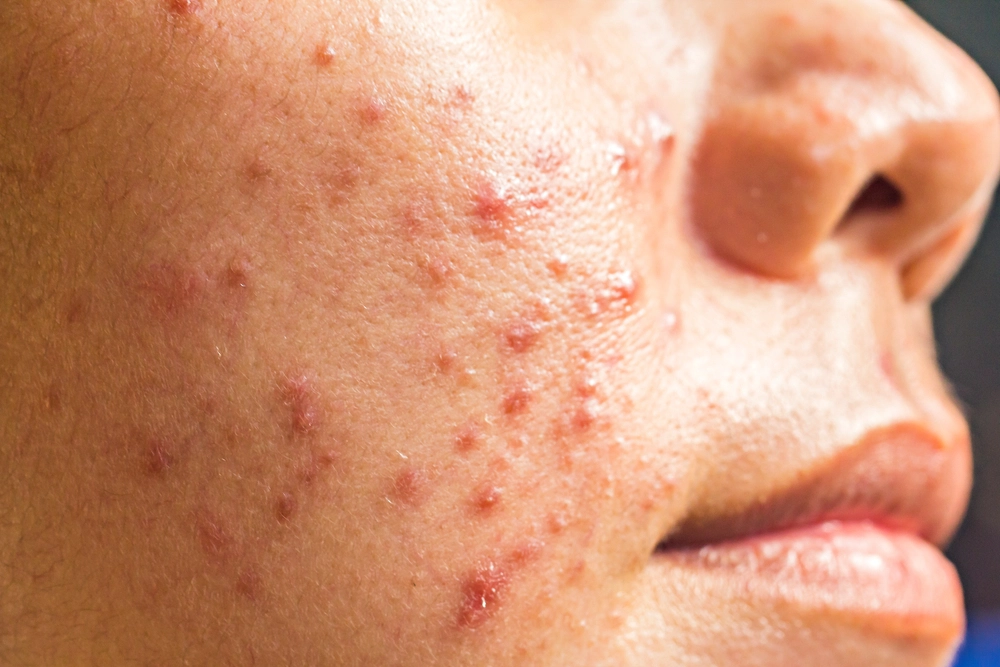What Is Cystic Acne
Cystic acne is a type of acne that forms deep within the skin, creating large, painful, and inflamed pimples or cysts. Unlike regular pimples, cystic acne does not have a clear head or surface and is often accompanied by redness, swelling, and tenderness. It is caused by a combination of excess oil production, clogged pores, and bacterial infection. Read this post till the end to learn the causes, symptoms, prevention, treatment, and skincare routine to get rid of cystic acne permanently.
This type of acne is often difficult to treat with over-the-counter products and may require the use of prescription medications, such as antibiotics or isotretinoin, in order to be effectively treated. People with this type of acne are also more likely to experience scarring. If you suspect that you have cystic acne, it is best to consult a dermatologist for proper diagnosis and treatment.
Causes Of Cystic Acne
Hormonal Imbalance:
Cystic acne is often associated with hormonal changes, such as puberty, menstrual cycles, pregnancy, and menopause. Hormonal changes can cause an increase in oil production, leading to clogged pores and breakouts.
Genetics:
This skin condition can also be influenced by genetics. If someone in your family has a history of this type of acne, you may be more likely to develop it as well.
Bacteria:
Propionibacterium acnes, a type of bacteria that lives on the skin, can contribute to the development of cystic acne. When pores become clogged, the bacteria can proliferate and cause inflammation.
Diet:
Diet may also play a role in the development of cystic acne. Eating a diet high in processed foods, sugar, and dairy products can increase inflammation in the body and trigger breakouts.
Stress:
Stress can trigger the release of hormones that increase oil production and lead to cystic acne. Managing stress through exercise, relaxation techniques, and therapy can help reduce the likelihood of breakouts.
Additional Factors Contributing to Cystic Acne:
Skincare products:
Using products that are too harsh or not suitable for your skin type can irritate the skin and contribute to cystic acne. Look for gentle, non-comedogenic products to help prevent breakouts.
Cosmetics:
Certain cosmetics, such as heavy, oil-based foundations, can clog pores and contribute to cystic acne. Choose lightweight, oil-free products, and make sure to remove all makeup before sleeping.
Folliculitis:
Folliculitis, an infection of the hair follicles, can lead to cystic acne. Shaving, waxing, and other hair removal methods can increase the risk of folliculitis and trigger breakouts.
Medications:
Certain medications, such as corticosteroids, lithium, and androgens, can increase oil production and contribute to cystic acne. If you are taking a medication and notice an increase in breakouts, talk to your doctor about alternative options.
Environment:
Environmental factors, such as pollution and high humidity, can also contribute to cystic acne. Wearing protective clothing and washing your face regularly can help reduce the impact of environmental factors on your skin.
In conclusion, there can be multiple factors that contribute to the development of cystic acne. Identifying the underlying causes and making changes to your lifestyle and skincare routine can help reduce the likelihood of breakouts.
Symptoms Of Cystic Acne
Painful Lesions:
This skin condition is characterized by deep, painful pimples that are located beneath the surface of the skin. These lesions are often accompanied by tenderness, redness, and swelling.
Inflammation:
Cystic acne is often accompanied by inflammation and redness around the affected area. This can make the skin feel hot and tender to the touch.
Scarring:
Cystic acne can result in scarring if left untreated. This scarring can be both physical and emotional, as it can impact a person’s self-esteem and confidence.
Persistent Acne:
Cystic acne is often persistent and can recur even after it has cleared up. This can make it difficult for people to control their acne and maintain clear skin.
Pustules:
Cystic acne often results in the formation of pustules, which are yellow or white head pimples that contain pus.
It is important to seek treatment as soon as possible, as an untreated condition can result in scarring and emotional distress. A dermatologist can recommend the best treatment options for you based on your specific case.
Treatment of Cystic Acne:
Topical Treatments:
Over-the-counter topical treatments such as benzoyl peroxide and salicylic acid can help reduce inflammation and promote healing in mild to moderate cases of the condition
Prescription Medications:
In more severe cases, a dermatologist may prescribe topical or oral medications to help reduce inflammation, kill bacteria, and unclog pores. Some common prescription medications include antibiotics, retinoids, and isotretinoin.
Injections:
Corticosteroid injections can help reduce inflammation and pain associated with cystic acne. These injections are often used in conjunction with other treatments and are performed by a dermatologist.
Light Therapy:
Light therapy, also known as photodynamic therapy, uses a combination of light and topical medications to kill bacteria and reduce inflammation associated with cystic acne.
Surgery:
In some cases, surgery may be necessary to drain large cysts or remove scar tissue. This is typically a last resort and is performed by a dermatologist or plastic surgeon.
It is important to work closely with a dermatologist to determine the best treatment plan for your individual case of this condition. A combination of treatments may be necessary to achieve the best results and maintain clear skin.
Prevention of Cystic Acne:
Maintain good hygiene:
Regularly washing your face, especially after sweating or touching your face, can help remove oil and bacteria that can contribute to this condition. Use a gentle cleanser and avoid using hot water, as this can strip the skin of its natural oils.
Choose non-comedogenic products:
Using non-comedogenic products, such as skincare and cosmetics, can help prevent clogged pores and reduce the risk of cystic acne. Look for products that are labeled “oil-free” and “non-comedogenic.”
Avoid picking or squeezing:
Picking or squeezing this type of acne can spread bacteria and worsen breakouts. Instead, try to avoid touching your face and seek the help of a dermatologist to manage.
Manage stress:
Stress can trigger hormonal changes that can contribute to this type of acne. Incorporating stress-management techniques, such as exercise, meditation, and deep breathing can help reduce the impact of stress on your skin.
Eat a healthy diet:
Eating a healthy diet that is rich in vitamins and minerals can help promote healthy skin. Foods high in vitamins A and E, such as carrots, sweet potatoes, and spinach, can be especially beneficial for managing this type of acne.
Avoid harsh products:
Using harsh skincare products, such as scrubs and exfoliants, can irritate the skin and make this worse. Instead, choose gentle products that are formulated for sensitive skin.
Get enough sleep:
Getting enough sleep is essential for healthy skin. Lack of sleep can disrupt hormonal balance and trigger breakouts. Aim to get at least 7-8 hours of sleep per night.
In conclusion, there are several steps that you can take to prevent this type of acne. By maintaining good hygiene, using non-comedogenic products, managing stress, and eating a healthy diet, you can reduce the likelihood of breakouts and improve the health of your skin.
How To Treat Cystic Acne Naturally
Home Remedies
1. Tea Tree Oil For Cystic Acne:
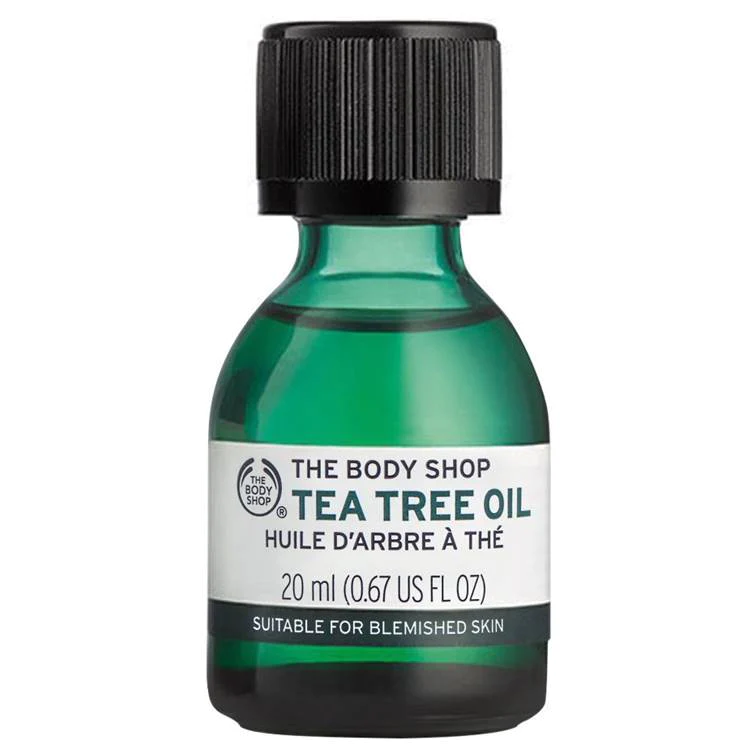
It has antimicrobial properties that can help kill the bacteria that cause acne. It can also reduce inflammation and help unclog pores.
2. Green Tea For Cystic Acne:
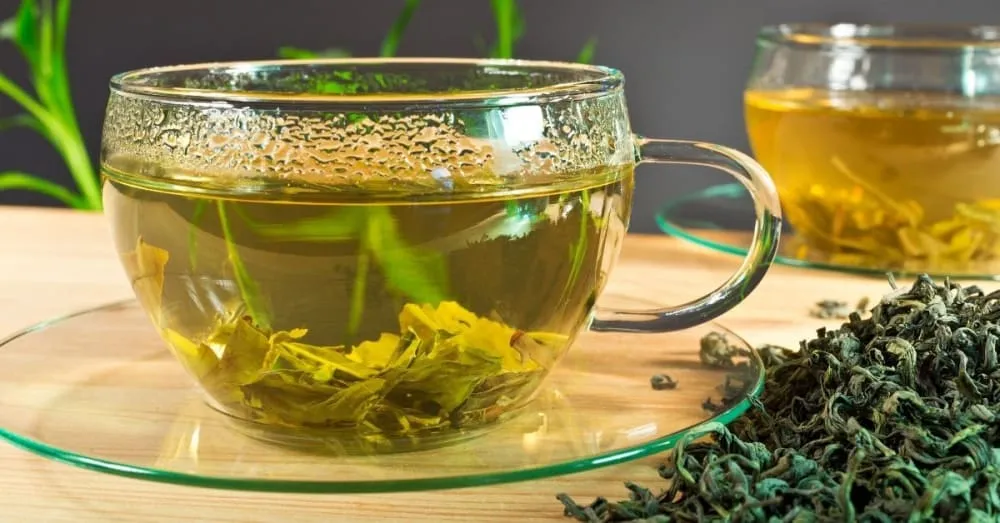
Green tea is rich in antioxidants and has anti-inflammatory properties that can help reduce redness and inflammation associated with this skin condition.
3. Honey For Cystic Acne:
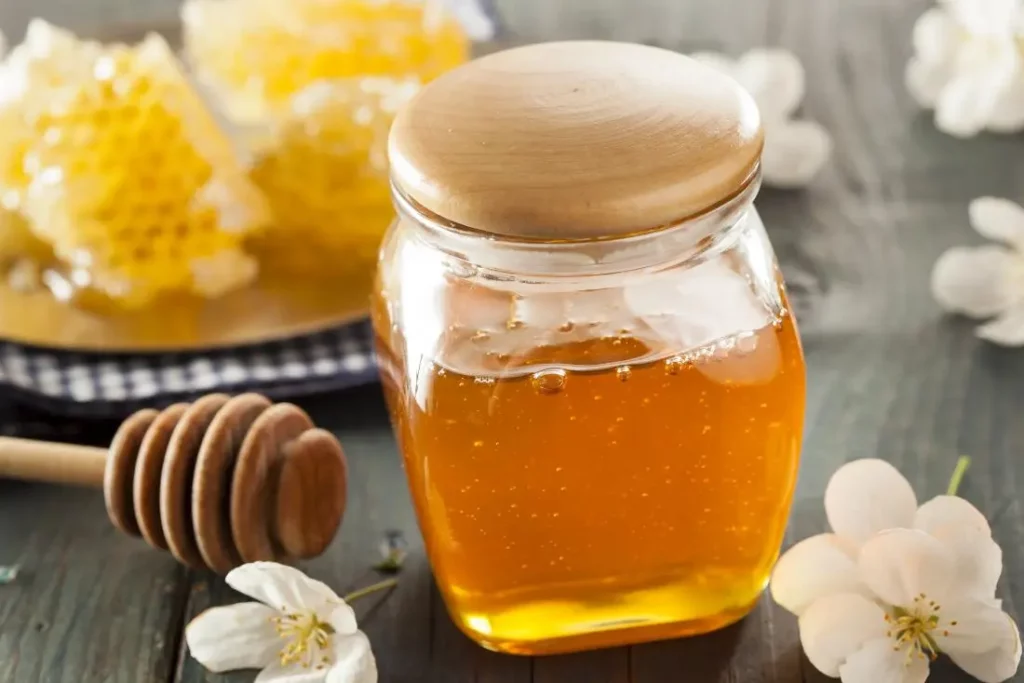
It has antibacterial properties and can help soothe and moisturize the skin.
4. Aloe Vera For Cystic Acne:
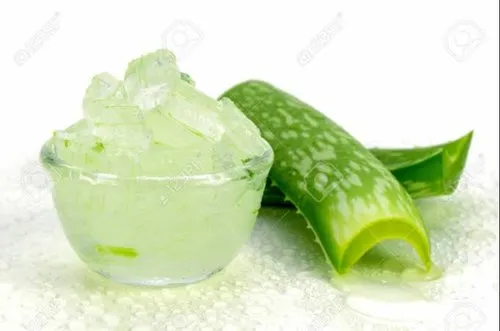
It has moisturizing and anti-inflammatory properties that can help soothe the skin and reduce redness and swelling.
5. Witch Hazel For Cystic Acne:

It has astringent properties that can help unclog pores and reduce inflammation.
6. Apple Cider Vinegar For Cystic Acne:
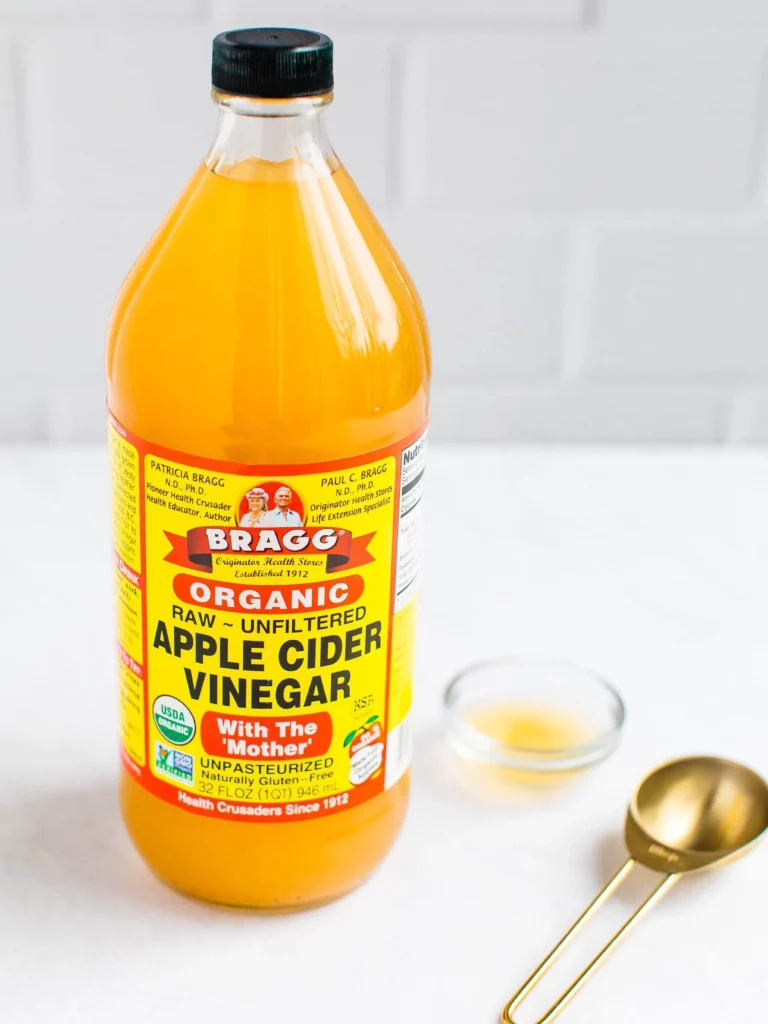
It has antimicrobial and anti-inflammatory properties that can help fight bacteria and reduce redness and swelling.
7. Steam:

Steaming the face can help unclog pores and reduce inflammation.
8. Benzoyl Peroxide For Cystic Acne:
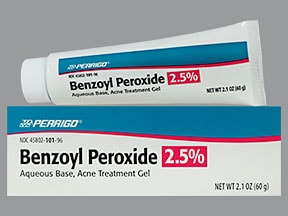
Benzoyl peroxide is a popular over-the-counter treatment. It helps to kill bacteria and unclog pores.
It is important to note that these home remedies may not work for everyone and some may even irritate the skin. Before trying any new treatment, it is recommended to patch-test a small area of skin first to see if there is a reaction.
15 powerful natural ingredients for PIMPLES
Skin Care Routine For Cystic Acne
Cleanse:
Use a gentle cleanser to remove dirt, oil, and impurities from the skin. Avoid using harsh or abrasive cleansers as these can irritate the skin and make acne worse.
Exfoliate:
Gently exfoliate the skin 1-2 times per week to remove dead skin cells and unclog pores. Avoid over-exfoliating as this can irritate the skin.
Treat:
Apply a spot treatment or leave-on treatment to target individual pimples. Products with benzoyl peroxide, salicylic acid, or retinoids can help to unclog pores, reduce inflammation, and prevent future breakouts.
Skin care routine to control Oily Skin
Moisturize:
Use a light, non-comedogenic moisturizer to hydrate the skin and prevent dryness.
Sun Protection:
Use broad-spectrum sunscreen to protect the skin from sun damage and reduce inflammation.
Avoid Touching the Face:
Touching the face can transfer bacteria and oil from the hands to the skin, making acne worse.
Maintain a Healthy Diet:
Eating a healthy diet that is low in sugar and high in fiber can help support the skin and prevent breakouts. The link between diet and acne has been controversial, but some recent research shows that diet can trigger or worsen acne.
Avoid These Foods That Trigger Acne To Get Healthy Skin
Reduce Stress:
Stress can trigger acne, so it is important to find ways to manage stress and reduce its impact on the skin.
It is important to be consistent with the skincare routine and not to switch products frequently as this can disrupt the skin’s balance and make acne worse. If over-the-counter treatments are not effective, a dermatologist can help determine the best course of treatment.
Do you know? It is important to know your skin type to combat potential issues without causing more problems. Identify skin type so that you can begin to make informed decisions.


